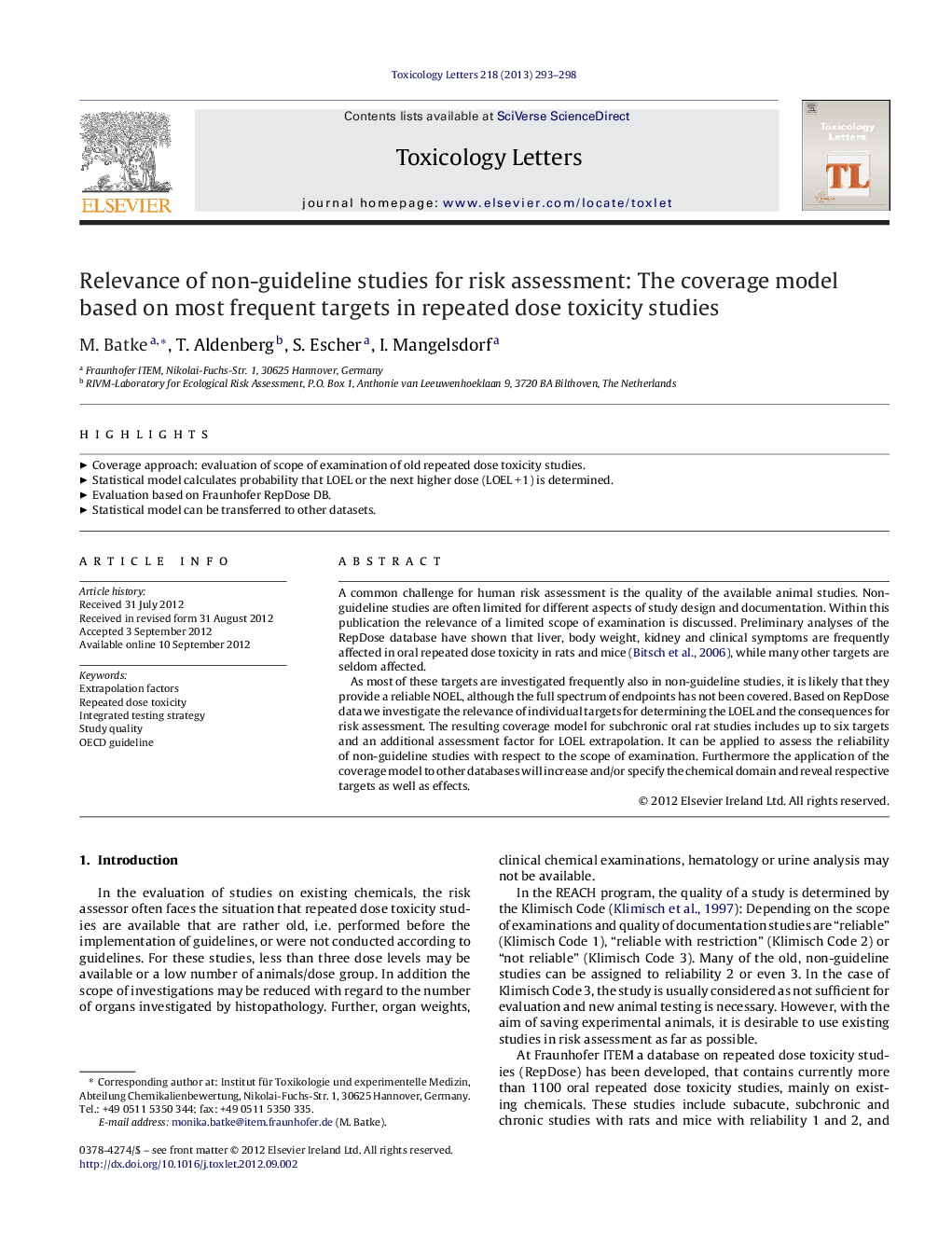| Article ID | Journal | Published Year | Pages | File Type |
|---|---|---|---|---|
| 5860643 | Toxicology Letters | 2013 | 6 Pages |
A common challenge for human risk assessment is the quality of the available animal studies. Non-guideline studies are often limited for different aspects of study design and documentation. Within this publication the relevance of a limited scope of examination is discussed. Preliminary analyses of the RepDose database have shown that liver, body weight, kidney and clinical symptoms are frequently affected in oral repeated dose toxicity in rats and mice (Bitsch et al., 2006), while many other targets are seldom affected.As most of these targets are investigated frequently also in non-guideline studies, it is likely that they provide a reliable NOEL, although the full spectrum of endpoints has not been covered. Based on RepDose data we investigate the relevance of individual targets for determining the LOEL and the consequences for risk assessment. The resulting coverage model for subchronic oral rat studies includes up to six targets and an additional assessment factor for LOEL extrapolation. It can be applied to assess the reliability of non-guideline studies with respect to the scope of examination. Furthermore the application of the coverage model to other databases will increase and/or specify the chemical domain and reveal respective targets as well as effects.
⺠Coverage approach: evaluation of scope of examination of old repeated dose toxicity studies. ⺠Statistical model calculates probability that LOEL or the next higher dose (LOEL + 1) is determined. ⺠Evaluation based on Fraunhofer RepDose DB. ⺠Statistical model can be transferred to other datasets.
